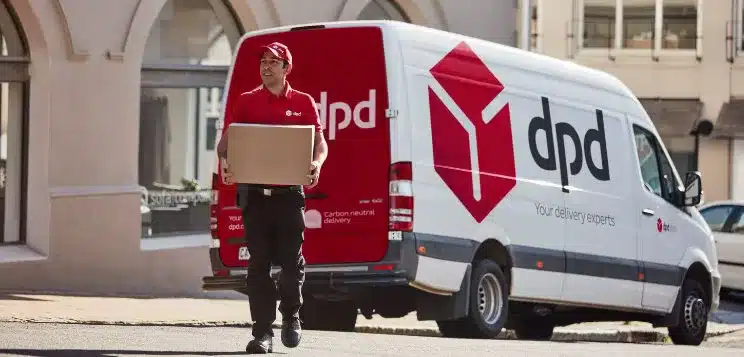If there’s one type of ecommerce shipping method that has been soaring in popularity lately, it’s dropshipping.
On the surface, it seems to be some sort of magic bullet for ecommerce start-ups, offering a low-risk business model that makes the need for warehousing and inventory management a thing of the past. But, we want to know whether drop shipping really is a better strategy than more traditional order fulfilment. Can it really be more profitable? Or, is third party logistics actually the better way to bridge the gap between your product and your customer?
What is Dropshipping & How Does it Work?
Dropshipping is an ecommerce fulfilment model that removes the need for the store to hold its own stock of inventory. It works by giving the supplier almost full control of the supply chain, with the ecommerce store acting as something of a middleman – they make the sale, then order the product to be shipped straight from the supplier’s warehouse to the customer.
So, if you ran a dropshipping business, you probably would never come into contact with the product yourself. You wouldn’t need to purchase it upfront or physically store it in your own warehouse, you wouldn’t need your own pick and pack team, and you wouldn’t need to arrange your own couriers or logistics.
These points are often viewed as the main advantages of dropshipping. However, as we will discuss in this article, there is much more than meets the eye.
Is dropshipping different from third party logistics?
Before we look into drop shipping in more detail, you might be wondering exactly how it differs from using a third party logistics provider. They both handle your orders on your behalf in their own warehouse, so what makes one any better than the other?
The main difference is that a third party logistics provider holds your own purchased inventory for you in their warehouse space. Unlike with a drop shipper’s warehouse, though, you still have complete control over your entire fulfillment process. They can help you find the best value couriers for your specific product, allowing you to provide your own branded packaging and optimise your sales process through their inventory management software.

The Pros and Cons of Dropshipping Business…
Dropshipping has been growing in popularity in recent years, as on the surface at least, it seems to make running an ecommerce business a possibility for just about anyone.
The main draw is that you need a minimal start-up fee compared with other fulfillment models. Your main initial costs will be your website, any subscription fee you pay to your dropship supplier and any marketing you need to do. This removes the need for any initial investment in stock or storage.
However, drop shipping is not necessarily completely risk free. Take a look at some of the main pros and cons of operating a drop shipping business…
The pros of dropshipping…
1. Low costs and overheads
As we already mentioned, many people are drawn to drop shipping as they see it is a low-cost and low-risk investment. For those who don’t have capital to set up a business with its own supply of stock, this can make e-Commerce possible where it wouldn’t have been before.
It is also – somewhat incorrectly – assumed that drop shipping will make you more profit, as you won’t have as many overheads relating to stock storage. You just need a computer and wi-fi!
2. Easy to set-up
As your supplier handles the supply chain, any logistics and shipping to the customer, all you have to focus on is making the sales. You can curate your own personally selected range of products from your dropshipper to target your specific audience, allowing you to focus on your own niche.
If marketing is your strong point, you’ll also have plenty of time to invest into getting your brand message out there, as you won’t get tied up in solving logistical problems.
3. You can be flexible and reactive
If you see a product suddenly start falling out of favour, and a new one gaining popularity fast, dropshipping gives you the flexibility to change tact quickly. Unlike ecommerce stores that pre-purchase their own inventory, you won’t have to worry about getting rid of stock that doesn’t seem to be as popular anymore.
Similarly, if you aren’t confident about forecasting the demand for your product, dropshipping doesn’t require you to pay money upfront for the inventory. You only need to buy exactly what you sell.
The cons of dropshipping…
1. Lower margins and profit
While initial overheads are lower for drop shipping businesses, this doesn’t automatically mean you will therefore have more profit. The fact that drop shipping is so easy has led to it becoming highly competitive, with a number of companies slashing profit margins in order to win higher order volumes. If you can’t compete with the lowest prices, dropshipping might not be worth your while.
Remember, your dropship supplier will need to make money too, as they need to cover the cost of their own warehouse and logistics. If you were to buy products in bulk from a wholesaler, it is likely you would get a better deal, leading to the potential for more profit per item.
In addition, heightened competition for the same items often means that businesses who use dropshipping rely heavily on paid advertising – which again, has become highly competitive. Without a sound understanding of digital marketing, this can begin to negate the savings you made on removing other overheads.
2. You don’t have as much control
As a dropshipping business, you will lose control over your supply chain in a number of ways, including…
Shipping – you are relying on your dropshipper to arrange a trustworthy courier at a low cost, with products often coming in from overseas. If you think you could find delivery cheaper elsewhere, you won’t be able to take advantage of it. Also, if you have a customer who buys multiple items from different suppliers, you might end up covering additional shipping costs, rather than being able to pack them together in a more cost effective way.
Customer experience – once again, it is up to the dropshipper to pick and pack your items correctly. You won’t be able to choose your own packaging or include any marketing materials in your delivery, either. In addition, any complaints about the product or delivery will still come to you, even though you have nothing to do with the fulfilment process. This can leave you in an awkward position, where you have to take the blame when you weren’t at fault.
Inventory issues – if there is a shortage of the product you sell, you are often at the mercy of your dropshippers. If you were buying your inventory, you could stock up on your best-selling items from a wholesaler to make sure you can always fulfil your orders. While this poses a greater risk, it can also offer a bigger reward. Similarly, you are relying on your dropshipper to let you know when items go out of stock. If they don’t let you know in time, this can lead to orders being placed that can’t be fulfilled.
Returns – some dropshippers do not accept returns and exchanges, or offer a shorter return period than you would like. you will again become the middleman between the customer and the supplier refunding or exchanging their item, which means more work for you.
Order Fulfilment – Which is Better?
When it comes down to choosing between dropshipping or order fulfilment for your ecommerce store, you should ask yourself how much control you want to have over your supply chain. While some dro shipping businesses have great relationships with their suppliers and have nailed down a profitable strategy, there are also those who struggle to see a sustainable amount of profit.<p>In addition, businesses who use dropshipping are pretty much limited to the products made available by their dropship suppliers.
If you want to expand your business into more unique new areas, you therefore might find yourself limited.A good mid-way point between dropshipping and fulfilling your orders yourself is to use a third party logistics provider. While you still need to invest in your own inventory.
Finally, a third party order fulfilment strategy offers a much better potential for you to grow your business in the long term. Getting a good understanding of not only your market but of your own business is essential for any successful e-Commerce business.




